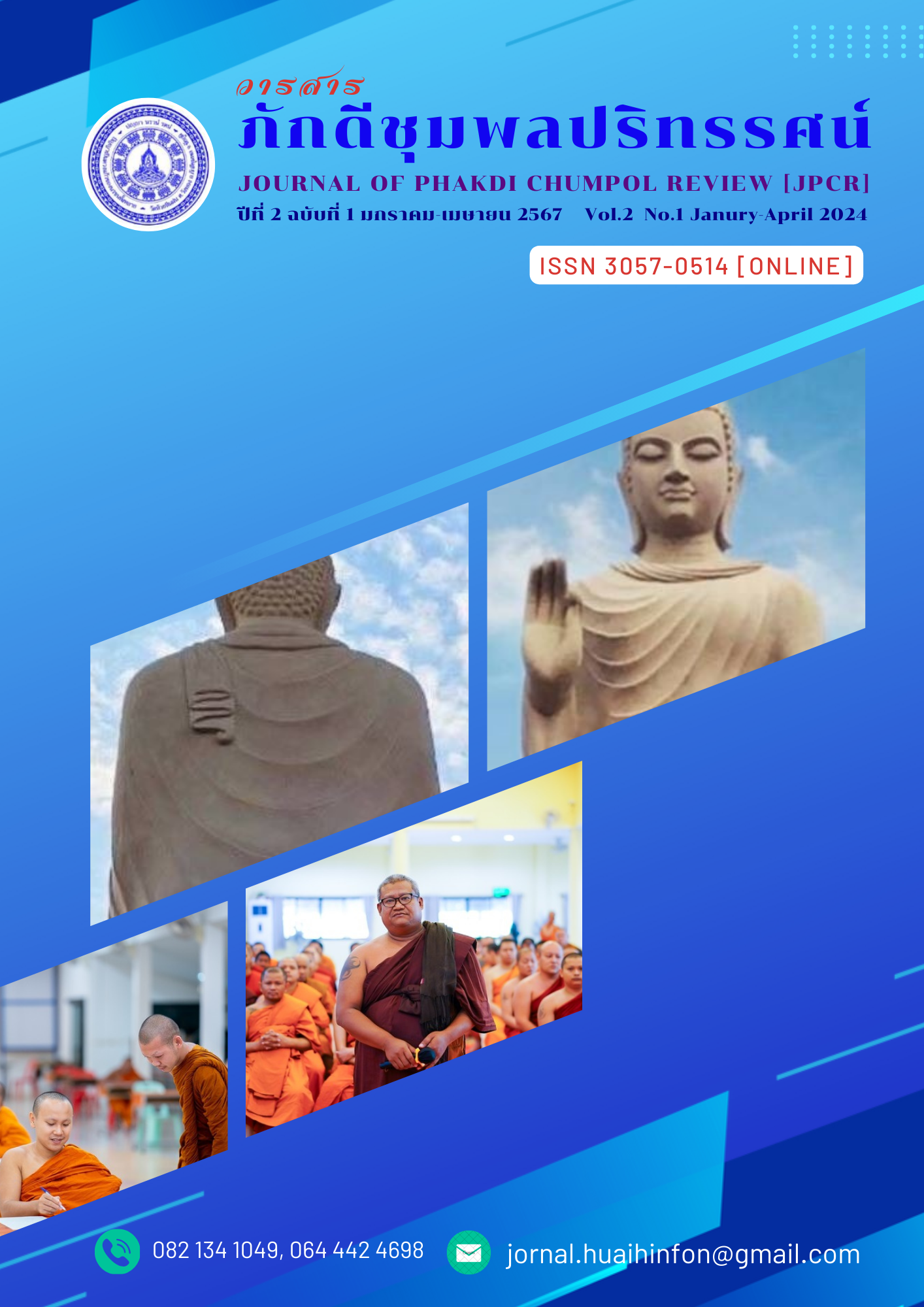Buddhist principles lead to a happy life.
Keywords:
Buddhist principles, Buddhism, principles for living togetherAbstract
This academic article aims to present Buddhist principles as a guideline for living life. Currently, there are various situations that occur that affect both the body and the mind. including human society in life Adopting Buddhist principles as a way of life will help result in living a peaceful life. There is no encroachment on each other. In addition, Dhamma principles will help anchor people's minds to behave in an appropriate way. Do not cause distress to yourself or others. creating true peace Buddhist principles that are important to oneself and living together according to important teachings in Buddhism include: 1. The Noble Truths, namely suffering, Samudaya, Nirodha, the Path. 2.The principles of Sangha Vatthu, 4 principles for living together in society, namely dana, piya. Speech, atthachariya, samanatta 3. Brahmavihara Dhamma 4 principles for living together, namely loving-kindness, kindness, mudita, and upekkha. 4. Practices between people in 6 positions - 6 directions, including 1st direction, father, and mother, who are like the direction in front, 2nd direction The teacher is like the right direction. The 3rd direction is the wife who is like the background direction. The 4th direction is the friends who are like the left direction. The 5th direction is the servants and workers who are like the bottom direction. The 6th direction is the monks who are like the direction. Direction above which Buddhists who have adopted the principles and teachings of Lord Buddha as a pattern for living life It will cause self-development. Both mentally and intellectually and contribute to a society of happiness in the future.




